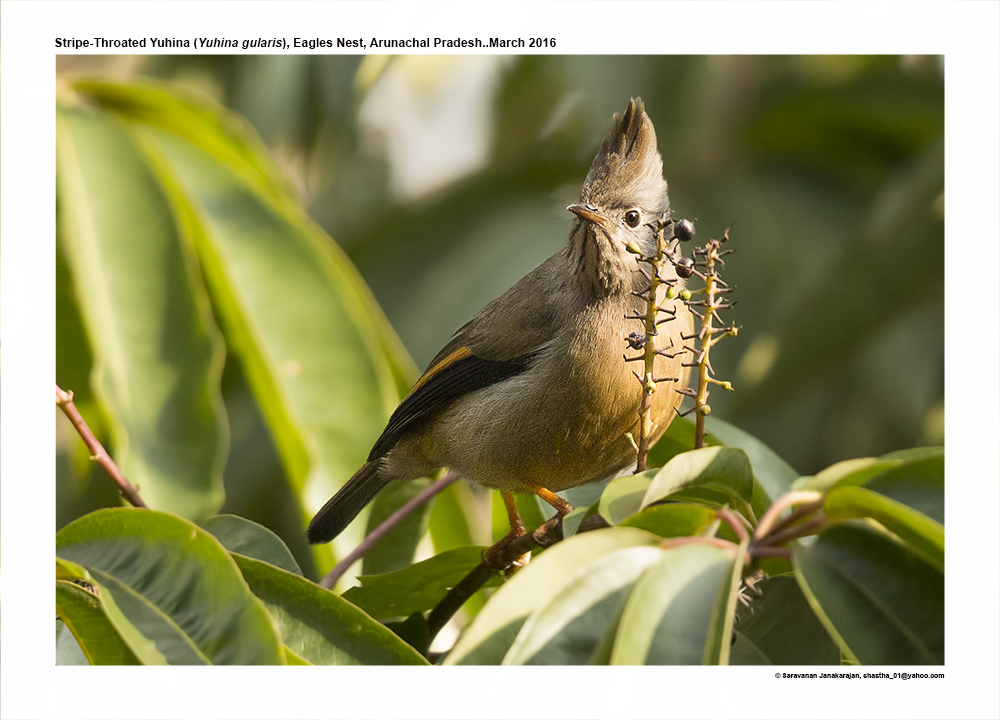Stripe-throated Yuhina

Stripe-throated Yuhina Yuhina gularis
Etymology:
- Yuhina : Named after “Yuhinof the Nipalese”
- Gularis: Latin word for throated
Vernacular Names:Lepcha: Fugi-pho
Distribution in India:Resident of Himalayas and North Eastern Hills in India..
Description: Size 12–16 cm; wt. of 12–26 g. It is a large, dusky Yuhina with prominent erect crest, black-streaked throat and orange-buff wing panel and slightly forked tail. The nominate race has elongate and erectile crown feathers rather dusky brown, mixed with warmer brown, tips are dull greyish; upperparts and upperwing are drab warm-tinged mid-brown, paler and more pinkish-grey on nape, rump paler and warmer, tail is dark brown with dark rufescent wash and outer fringes. The primary coverts and primaries are blackish-brown, secondaries except outermost are with pale orange-buff outer vanes forming prominent panel. The lores are dusky, with blackish band to above eye, head side including supercilium are medium brownish-grey; submoustachial area is dirty pinkish-buff, chin and throat are similar and with regular lines of dark brown streaks and malar line. The underparts are dirty ochre-buff; iris is dark reddish-brown to pale brown; upper mandible is dark brown, lower mandible basally is brownish-yellow to fleshy-horn, distally dark brown. The legs are yellow to brownish-flesh or fleshy orange. Both the sexes are similar. The juvenile is slightly darker rufous-brown above, especially on uppertail-coverts, crest shorter.
Habitat: It is found in temperate oak, birch and rhododendron forest or mixed rhododendron and coniferous forest, occasionally low scrub and bamboo. It breeds from 2135 m –3700 m and descends in winter to 1200 m.
Food habits: It eats beetles, wasps and other insects, berries, flower nectar,seeds and sugar-rich sap from bark.It is usually found in small parties, often in association with mixed feeding flocks which may contain other small babblers. It forages in taller bushes and lower branches of trees, sometimes low down.
Breeding habits: They breed in May–Jun in India, Jul–Aug in Bhutan, Apr–May in China and Mar–Jun in South-East Asia. The nest is a large, rough ball or dome with side entrance, made of well-interlaced moss, fern and roots, lined with finer roots, placed in branch fork of bush, palm crown, bamboo clump, or between ledges of rocks. They lay a clutch of 4 eggs.